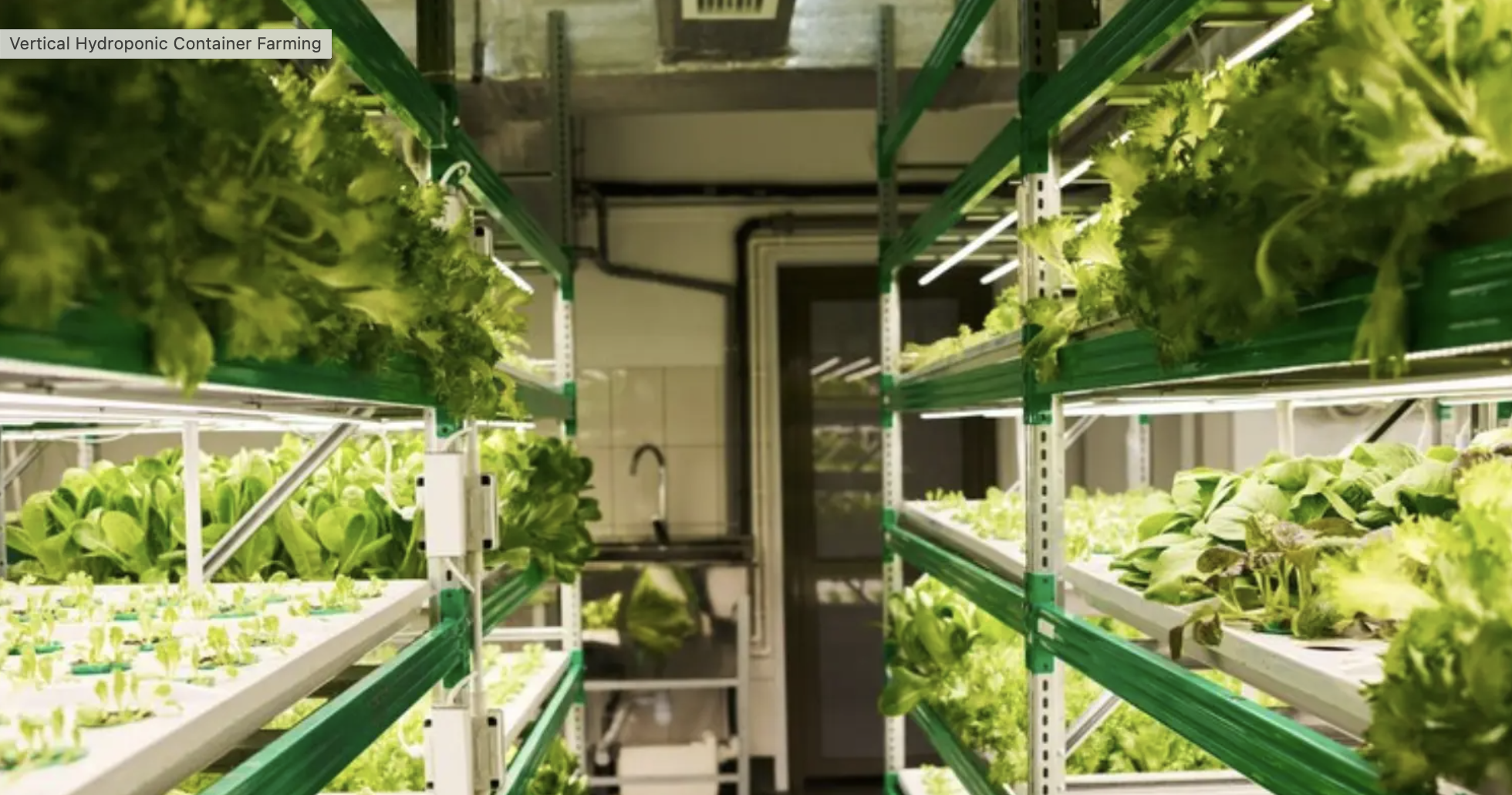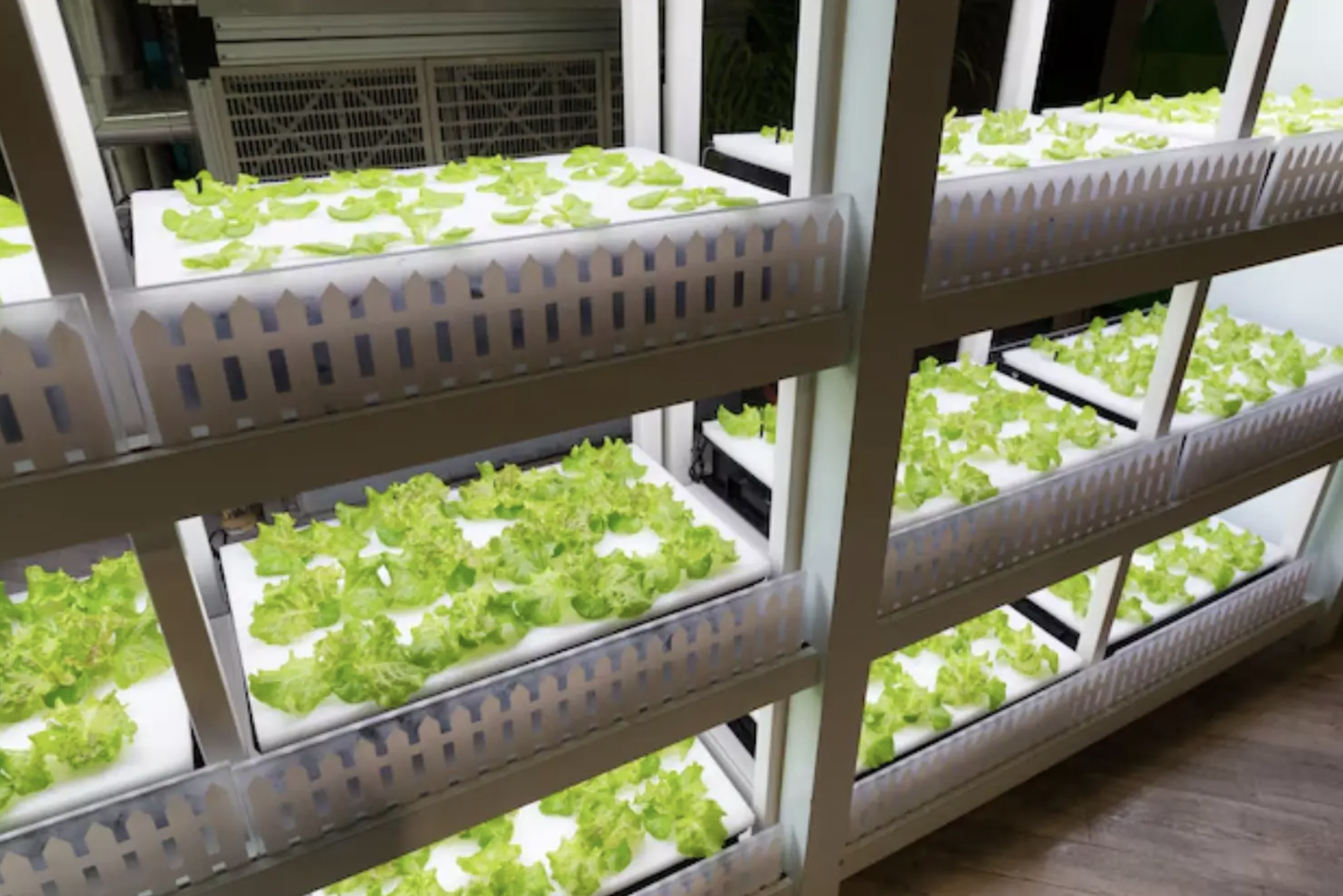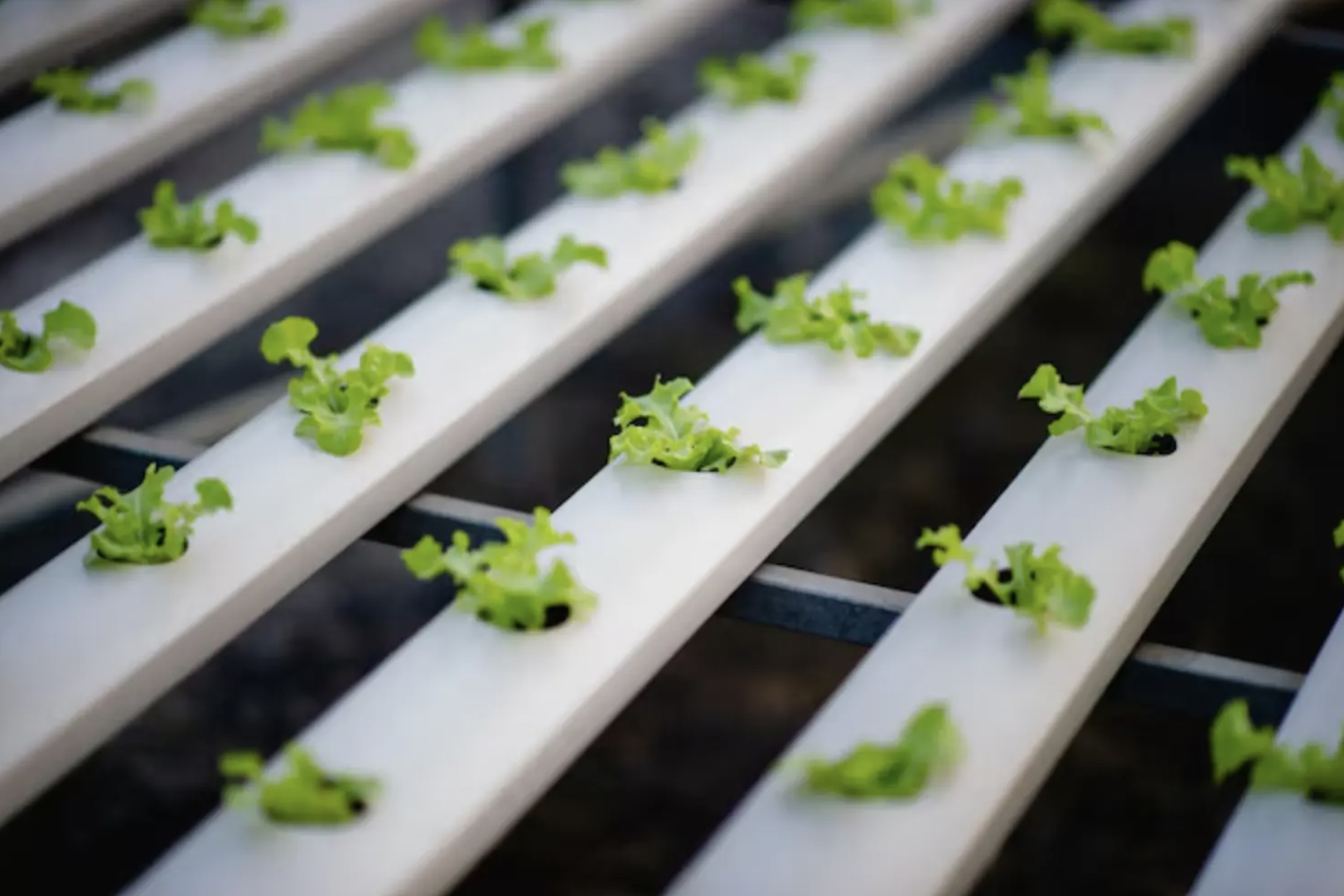Vertical Hydroponic Container Farming: A Sustainable Solution
Mariam Scott
06/28/2024
Vertical hydroponic container farming is a new way to farm that is better for the earth and fixes problems with the old ways of farming. By stacking plants vertically inside shipping containers, this method saves room and resources. It works great in cities and other places with little natural land. With a focus on what Freight Farms and Amplified-Ag have done, this article will talk about different parts of container farming technology, such as its benefits, new technologies, effects on communities, and the future of farming.
Understanding the Basics: How Vertical Hydroponic Container Systems Work
In vertical hydroponic systems, plants don't need dirt because water full of nutrients goes straight to their roots. Ship containers are used to store these systems because they are made to make the best use of room and materials. The water pumps, fertilizer solutions, and growth lights are some of the most important parts.
They all work together to keep plants in a controlled space where they can grow. Freight Farms and Amplified-Ag make high-tech vertical hydroponic container systems. These systems have made it easier and more effective to grow plants that are better for the earth in this way.
Benefits of Container Farming
Sustainability and Environmental Impact
The vertical hydroponic field boom stands out because it can be used repeatedly. Because the nutrient solution is used again inside the machine, this method uses much less water than regular planting. Weed killers and pesticides are also used a lot less because the temperature is controlled. In other words, the food is healthier and better. Traditional farming uses more resources, so it leaves a bigger carbon footprint than vertical hydroponic field farming.
Maximizing Space Efficiency
If you live in a city and need more room, vertical hydroponic container systems can help. For every square foot of space, they can grow more plants because they are grown in stacked high layers inside shipping containers. This means that vertical hydroponic container farm is a great way for city people to grow their food when they need more space.
Year-Round Production: Controlled Environment Agriculture (CEA)
With controlled-environment agriculture (CEA), fresh food can be grown all year long. The conditions for growing are always just right, no matter what the weather is like outside. Vessel hydroponic systems make it easy to control the environment, so vegetables grow well all year. That way, everyone will have enough food, and the changes in the seasons will be better.
Vertical Hydroponic Container Farming with Freight Farms' Greenery
Freight Farms has set up a world network of hydroponic container farms that work in many places, from busy cities to remote rural areas. Their presence in many countries shows how flexible and useful their answers are in many situations.
The Greenery S model from Freight Farms is a great example of a commercial-scale, modular hydroponic farm that can be built inside a shipping container. This creative idea creates a controlled space where valuable plants like herbs, lettuce, and leafy greens can grow. Success stories from different parts of the world show how useful and adaptable the Greenery is, showing that it could be widely used.
Versatile Farming Solutions by Amplified-Ag
Containers from Amplified-Ag are manufactured from upcycled refrigerated shipping containers and are a flexible and scalable way to grow different foods. Their technology creates an exact space for plants to grow the fastest. The fact that Amplified-Ag's farming solutions have been used successfully in other places shows how flexible and useful they are.
Empowering Local Communities: Importance of Local Food Production
Making food locally is important for protecting food and making networks more resilient. Vertical hydroponic systems let communities grow clean, fresh produce, healthy food close to home. These shipping container farms cut down on the need for long-distance shipping and ensure there is always food available.
Technological Innovations: Advanced Farming Technologies
New technologies are very important to the success of vertical hydroponic field farming. Automation and IoT (Internet of Things) technology have changed the way these structures work, allowing for monitoring from far away and custom changes to many factors.
LED Lighting for Optimal Growth
For hydroponic farming, lighting is very important. LED grow lights are now the standard because they use less energy and can be set to a certain range. LEDs are different from other types of lighting because they let you precisely control the light colors. This is important for improving photosynthesis and supporting healthy plant growth. You can fine-tune these lights to give off certain wavelengths that meet the needs of different plants at different times of growth. For example, blue light is important at the vegetative level because it helps the leaves grow, and pink light helps the flowering and fruiting levels.
Lighting made with LEDs also uses a lot less electricity than older types of lighting. Because it uses less power and produces less heat, there is no need for as many cooling devices, which saves even more money. LED lights work very well in pure greens container farms, which should protect the environment while being closely controlled.
Precision Hydroponics and Nutrient Management
For plants that grow up in good containers, you need to be careful with hydroponics and keep track of the nutrients. Plants need to get the right amount of water and food at the right time for these to work. They stay healthy and grow well.
If you grow things the old way, nutrients can be lost through water or spread out across the land. Hydroponic systems, on the other hand, make a controlled environment that uses minerals more efficiently and cuts down on waste. Plants stay healthy, and water and chemical fertilizers are saved, which is good for the land.
When growing plants upright in pots, it's important to ensure each one gets the right amount of fertilizer solution. You need to know a lot about plants and what they need to do. This is the mix of nutrients that peppers and tomatoes need. Lettuce and spinach need a different mix. They do this to ensure each plant gets the right mix of macro and micronutrients for its growth stage. To get the best results and maintain the quality of the food, it's very important to follow this method.
The Future of Urban Agriculture
Thanks to the rise of tall hydroponic container systems, people can soon farm in towns. As places get bigger and farming becomes harder to find, these methods are a good way to grow fresh food close to home. Indoor farming gets higher and simpler to do on a huge scale as new thoughts come up. These ideas encompass more superior robots and higher ways to feed people.
The Bottom Line
Vertical hydroponic field farming is a brand new way to farm with a view to ultimate a long time. This method have to alternate the way we develop food because it makes the excellent use of space, conserves resources, and permits farming to happen all year. This farming could be a key a part of ensuring a safe and wholesome food destiny as those modifications and new technologies emerge.
Agriculture is changing, and companies like Freight Farms and Amplified-Ag are part of it. They give groups from all over the industry the power, tools, and help they need to make easy and effective vertical hydroponic container farming.
Disclaimer: This material is for informational purposes only and should not be relied on for legal, medical, financial, or other professional advice.








